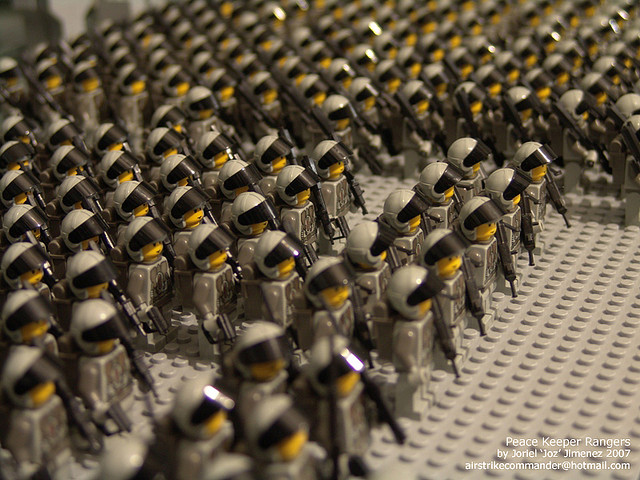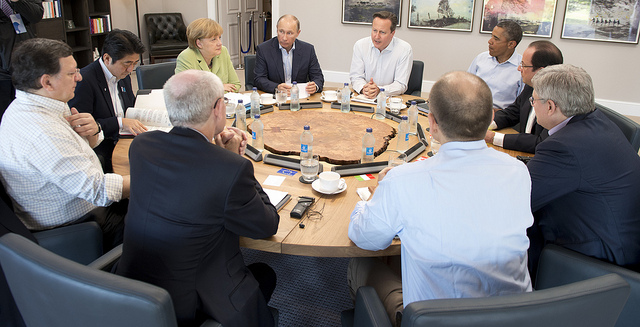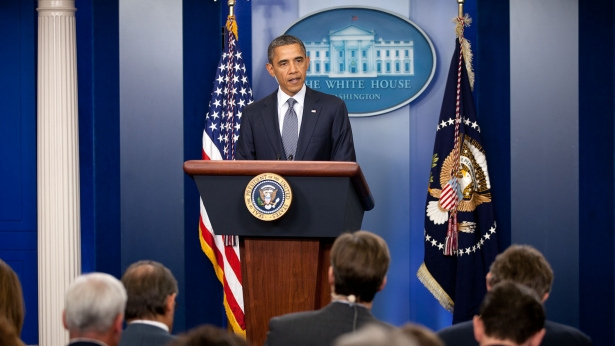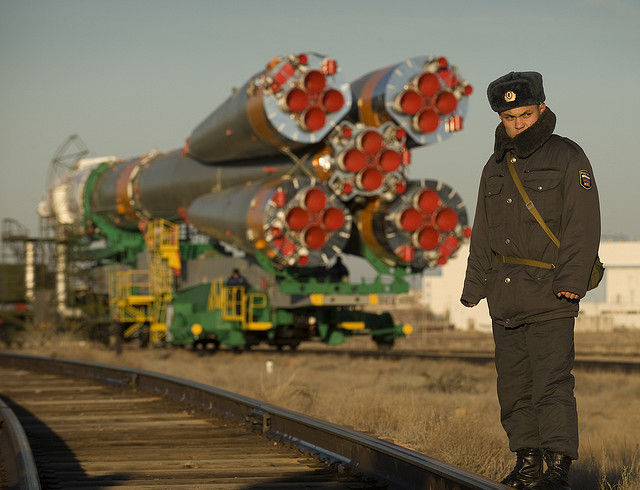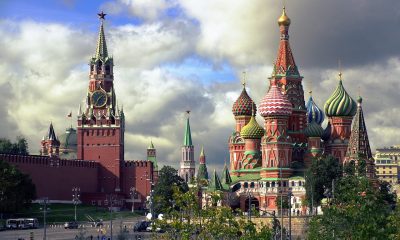Opinion
Comparative Study of EU, US and Russian Security Strategies
Article co-authored with Svetlana Izosimova, Master’s student of International and European Relations at Linkoping University, Sweden.
In the context of globalization the ability to challenge internal and external threats is a precondition for development. International and national security today are inextricably linked. States acquire military capabilities not simply to defend their homelands but also to maintain global power projection capabilities. In the post-Cold War system, among the major powers whose behavior affect the security the whole international arena we have the United States, the European Union and the Russian Federation. The United States is emerging as the status quo hegemonic power, while the EU can be seen as unifying around a shy opposition to the US and as seeking to become a new pole of power. Finally, Russia during the past couple of years is trying to restore its great power influence.
Each of these major powers occupies a different position in the international system which agreeably affects their national strategies toward security and military power. By focusing on the key elements, such as major threats, strategic objectives, the ways these objectives are intended to be achieved and the position of each state regarding other actors, similarities and differences between the approaches in national security strategies can be discerned.
The European Security Strategy
Strategic objectives
The European Security Strategy (ESS) was adopted in 2003 and presents a crosscutting approach in security problems. It outlines the interests of the EU among which enlargement and prosperity, promotion of democracy and international order, reduction of climate change and vital resources security, the autonomy of EU decision-making and migration management, as well as the fundamental principles of the UN Charter and OSCE.
Key threats
The key threats challenging European security are: terrorism, proliferation of weapons of mass destruction (WMD), regional conflicts, state failure, organized crime. In 2008 the threats mentioned in the European Security Strategy were extended with the Report on the implementation of the ESS: providing security in a changing world. The listed threats were completed by adding specific challenges such as climate change, cyber security and energy security.
Defense policy
To defend its security and promote its values the European Union pursues concepts based on conflict and threat prevention. Each require a mixture of instruments and patterns including economic and security cooperation, better institutional coordination, transparency and flexibility. Essential approaches to address challenging situations require political and security development through diplomacy and cooperation, crisis response and civilian and military crisis management. The expansion of the dialogue and mediation capacities is facilitated by the civil society and NGOs which are as vital actors. The ESS offers very little guidance as to the kind of military instruments. The value of military capabilities and the use of military force is discussed only in the context of crisis management where the importance of the civilian input is mostly stressed.
International Cooperation
Apart from countering threats the European Security Strategy suggests two separate strategic objectives: ‘building security in our neighborhood and promoting an international order based on effective multilateralism.’ The emphasis on an effective multilateral order, both in the form of cooperation between member states and under global cooperation is a key aspect of the strategy. The key players that contribute to the international system are The United Nations, the World Trade Organization, the United States and NATO. Emphasis is also placed on the importance of expanding relationships with China, Canada, Japan, Russia. On the regional level, the EU supports collaboration with organizations such as ASEAN, MERCOSUR and the African Union.
The EU sees itself as a ‘global player’. The ESS states that the EU should be ready to share responsibility facing global challenges: ‘There are few if any problems we can deal with on our own. The threats described above are common threats, shared with all our closest partners. International cooperation is a necessity.’
The US Security Strategy
Strategic objectives
The most recent US National Security Strategy was adopted in May 2010. It is primarily focusing on issues regarding security, prosperity, and values. The strategy underlines the necessity of renewing American leadership to advance its national security interests. That includes military might, economic competitiveness, moral leadership, global engagement and efforts to shape an international system that serves cooperation to meet global challenges.
Key threats
Threats addressed by the strategy are terrorism, extremism, pandemics, the economic crisis, climate change and Arctic interests. The actions of al-Qa’ida and its affiliates are considered a prominent threat to the American nation. The U.S. National Security Strategy sees weapons of mass destruction as the greatest threat to national and international security. Furthermore, the need for better cyber-security and the dependence on fossil fuels are also defined as fundamental national security issues.
Defense policy
To respond comprehensively to dangers, the US see the renovation of economy by providing education, energy, science/technology and health care as a starting point. Values such as democracy, human rights, and the rule of law are essential sources which ought to be promoted. The modernization of institutions, strengthening of international norms and enforcement of inter national law under US leadership is also a strategic task. The use of military force together with diplo macy, development and international norms and institutions can help resolve disagreements, prevent conflict and maintain peace. Nonproliferation entailing a reduction of the nuclear arsenal and the reduction of the reliance on nuclear weapons is also on the security agenda.
International Cooperation
The report stresses the need for international cooperation and engagement. The necessity of ensuring strong alliances through multinational cooperation and coordination is noted. The cornerstone partnership organizations remain the traditional European and Asian allies, NATO and Eastern European countries. Relations with countries such as China, India and Russia are critical to building broader cooperation on areas of mutual interest. The strategy also focuses on Iran stating that the US can offer Iran a pathway to a better future provided Iran’s leaders are prepared to take it. Supporting the expansion of democracy and human rights abroad is also one of the main points in providing international security.
Russian Federation Security Strategy
Strategic objectives
Russia’s strategy was approved in 2009 and consists of 112 paragraphs dealing with strategic priorities, goals and measures. As the first priorities for Russia’s national security, defense, state and societal security are listed, followed by social-economic concerns such as increasing the quality of life and economic growth. According to the NSS the interdependence between civil stability and national security is crucial. Also, social-economic development is just as important as military security.
Key threats
NSS points out as a threat the policy of a number of leading countries which seek military supremacy by building up nuclear as well as conventional, strategic arms, unilaterally developing anti-ballistic missile defense systems and militarizing space (which may trigger a new arms race). Another threat is NATO expansion near Russian borders and the attempts to grant this military alliance a global role. Energy security represents another challenge claiming that competition for energy resources might create tension which could end in the use of military force near Russian borders. In addition to external threats, the document also listed domestic problems, terrorism, separatism, radicalism, extremism, organized crime, corruption and the danger of pandemics.
Defense policy
The main component of the provisions of national security consists of preventing global and regional wars and conflicts on the basis of the principles of reasonable sufficiency and effectiveness including non-military response, mechanisms of public diplomacy and peacekeeping and international military cooperation. Military security is ensured by developing and improving the military organization and defensive potential of the state through the implementation of military-technological policies, the development of military infrastructure as well as by increasing the prestige of the military service.
International Cooperation
The development of bilateral and multilateral cooperation with member states of the CIS is a priority direction of Russian foreign policy. Russia will seek to develop relations with the United Nations and NATO on the basis of respect and mutually beneficial cooperation. Cooperation with the European Union is also in the long-term national interests. Russia is willing to increase collaboration with G8, G20, RIC, BRIC as well as the partnership with the United States in terms of strategic offensive arms.
Conclusion
As a result, in matters of security the European Union has been more sympathetic to issues such as integration and multilateral coordination, where it can exercise its ‘soft power’ resources to influence other actors. The US is predisposed to the path of ‘smart power’ through the use of military might with greater investments in its partnership, alliances and public diplomacy. Finally, Russia in attempts to build a new stable economy puts on the first place economic and social development. National security is without a question important and the preconditions for reinforcing the system of national security have been created, although the model of security hasn’t been changed largely since the collapse of Soviet Union. The nuclear shield and military hard power still remain crucial features of the national security concept.
References:
Paul ,T.V. and Ripsman, Norrin. Globalization and the National Security State. New York; Oxford: Oxford University Press, 2010;
Rees, Wyn. The US-EU Security Relationship: The tensions between a European and a Global Agenda. Basingstoke: Palgrave Macmillan, 2011;
European Union. A Secure Europe in a Better World – The European Security Strategy. Approved by the European Council held in Brussels on 12 December 2003 and drafted under the responsibilities of the EU High Representative Javier Solana;
European Union. Report on the Implementation of the European Security Strategy – Providing security in a changing world. Approved by the European Council held in Brussels on 11 and 12 December 2008 and drafted under the responsibilities of the EU High Representative Javier Solana;
Russia’s National Security Strategy to 2020, Rustrans [English], 2009 available at http://rustrans.wikidot.com/russia-s-national-security-strategy-to-2020;
United States. National Security Strategy. 2010
China
Nepal Hindu Rashtra: Time to Wrap Up Communism?

Nepal abolished the Constitutional Monarchy in May 2008 and declared itself as a Federal Democratic Republic. There was a new hope in Nepal as it was becoming world’s newest democracy even though it had dissolved the Hindu Rashtra. However, the democracy in Nepal immediately got into the tight grips of leftists and communists backed by China. It has been almost 12 years since monarchy was abolished in Nepal. Interestingly, the Himalayan country has already seen 11 Prime Ministers in this period. Thus, leaving the Nepalese people still yearning for good and stable governance.
Re-establish Hindu Rashtra
As the political instability is growing in Nepal, people are demonstrating concerns about the future of the country. In fact, Nepalese citizens are unhappy with frequent interference by China and India influencing its unstable communist regime. More voices are now growing in support of reinstating the Monarchy and declaring Nepal as world’s only Hindu Rashtra (which by default offers full religious freedom to other religious minorities as per Hindutva concept of Sarva Dharma Sama Bhava – all paths lead to one).
Former Deputy Prime Minister of Nepal, Kamal Thapa said that if political parties do not recognize the seriousness of reinstating the monarchy, then the country will head for a period of darkness. “Recently, we’ve had high-ranking officials from India and China come to Nepal to try and solve problems within the ruling party,” he said. “We cannot let others dictate what we want to do.”
Communist Party All Set to Suppress Protests, By Force
Kamal Thapa has firmly demanded an all party meet to discuss reinstating of monarchy. Throughout the month of December, 2020 Nepal has seen anti communism protests across the country in support of reinstating the monarchy and Hindu Rashtra. Most importantly, the demand has become a nationwide mass people’s movement. So much so that the communist regime had to send a directive to 77 districts in 7 provinces. The directive suggests suppressing the protests by force. Nevertheless, Rashtriya Prajatantra Party and other royalist groups have ignored this threat from the communist regime. Protester groups have pledged to strengthen the protest in the coming weeks.
Nepal: Demonstration held in capital Kathmandu, demanding restoration of monarchy in the country. pic.twitter.com/TFjmKu9U9Z
— ANI (@ANI) December 5, 2020
Role of China – Hope for Communism in Nepal
China’s ambassador to Nepal is known to have very close relationship with Nepalese Communist regime. In fact, She has been super effective in tilting Nepal’s posture towards its ideological partner, China. One of her greatest achievements in 2020 was artificially manufacturing a border conflict between Nepal and India. Consequently, souring relations between the two Hindu majority nations. In addition, she managed to silence Nepal’s communist government after China took one of Nepal’s border villages under its control. However, recent political turmoil in Nepal and a renewed demand for reinstating of Hindu Monarchy is showing that the situation is now out of Chinese hands
Role of India
Year 2020, was not a good year for India and Nepal relations. India was busy in controlling domestic Covid cases. On the other hand, China had launched an invasive campaign into Indian territory. In addition, India is always busy with Pakistan on its western borders. However, the surprise came to India when China was almost successful in creating a new border tension between India and Nepal.
Those who do not know about Indian government should note that the current ruling party in India finds itself ideologically opposite to communism. This further creates differences between the two countries.
Communist party in Nepal has blamed India for supporting the ongoing anti communism protests in Nepal. However, former advisor to Nepal’s PM has suggested there is no proof that India is fueling pro Monarchy, anti communism demand in Nepal.
Nevertheless, There are certain influencers in India who have, in their personal capacity, expressed support for reinstating the Hindu monarchy. Yogi Adityanath, who is the Chief Minister of an Indian state bordering Nepal, said in 2015 that Nepal should declare itself a Hindu Monarchy. Readers should note that in 2015 Yogi Adityanath was not the Chief Minister yet. However, today he is not only popular in south of Nepal, his popularity is growing in Nepal as well.
Will The World See the first Hindu Rashtra?
It is difficult to answer this question at this moment. However, Nepalese communist government could not resolve the political instability and in December 2020 Nepalese government dissolved the parliament. Nepal will see next elections in April – May 2021. Hopefully, the world will see Nepal’s 12th Prime Minister in 13 years or may be a Hindu King? Royalists and protester groups have expressed confidence in winning next elections. We have our eyes on Nepal for updates.
Opinion
America’s Justice System – The Need For Reform
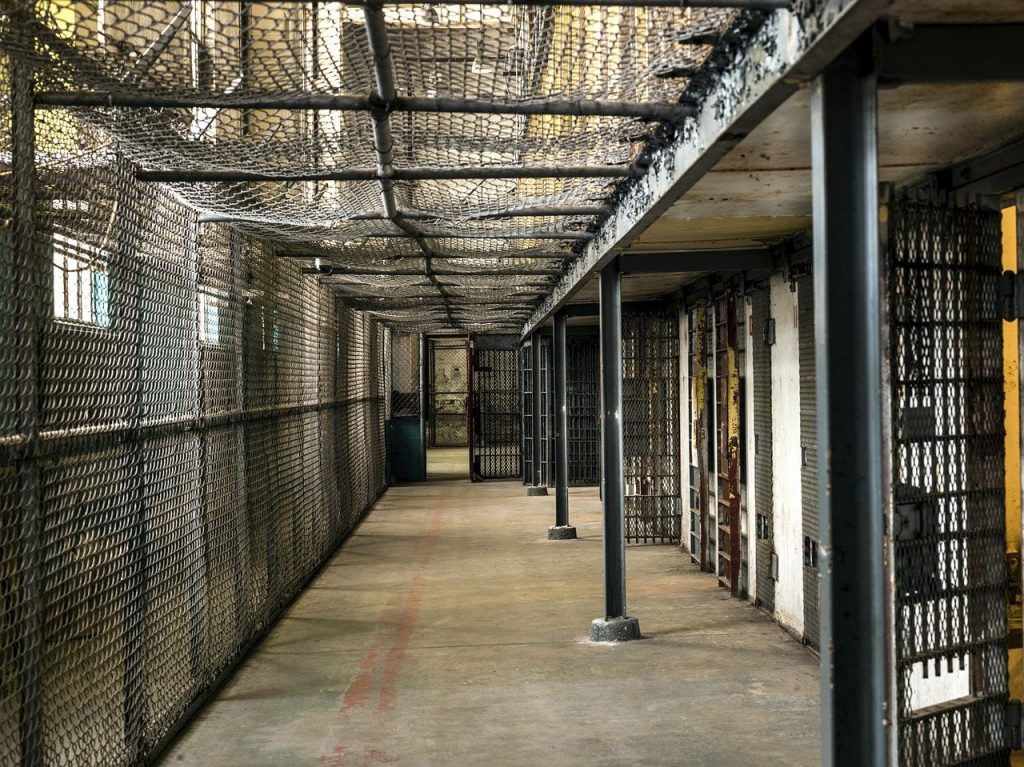
A recent poll by the National Opinion Research Centre revealed that 95% of Americans favour vital criminal justice reforms. This is hardly surprising, given that several people of varying racial, partisan and ideological dispositions have called out the justice system over its many failures throughout the years. Most Americans received the Trump Administration’s First Step Act as a step in the right direction, as about 60% of people approved the criminal justice reform bill according to a 2018 poll. However, many people still believe the justice system’s approach to crime is ineffective and needs dire change, and these are some reasons why.
Prison population and funding concerns
Research conducted revealed America has about 2.3 million prisoners, making the US the country with the highest incarceration rate globally. Experts estimate that the country’s prison population has grown by a whopping 340% over the past three decades; new prisoner admissions into jails are higher than prisoner release numbers. The cost of maintaining the nation’s prisons at taxpayers’ expense has inspired a lot of backlash and calls for budget cuts. According to research, slashed correction spending was the preferred option by most states to balance their budgets and redirect spending to other areas.
Minimum mandatory sentences
Minimum mandatory sentences are statutes that force judges to give defendants convicted of a crime the minimum prison sentence. Mandatory sentences rob judges of the traditional way of considering the defendant’s character and the unique circumstances surrounding offences. Even when represented by criminal defense attorneys with many years’ experience, defendants often succumb to prosecutors’ pressure to plead guilty or face more severe charges with higher mandatory sentences. The guilty plea bargain consequently resolves about 95% of both federal and state court cases. Research also shows that about half of inmates in federal prisons are doing time for drug offences- causing overpopulation in the prison system.
Growing number of people killed by the police
An estimated 1000 civilians are killed by police officers annually in the US. The frequency of police brutality cases over the years requires immediate reform to the American justice system. Data suggests that the incidence of fatal police shootings is higher among African-Americans than any other ethnicity, inspiring movements like the ‘Black Lives Matter’ campaign to press on with protests for significant police etiquette reforms towards coloured minorities. The police force faces incessant accusations of racial profiling, indiscriminate use of power, and poor discretion, which has led a reported 58% of Americans to think policing needs major reforms through measures like better-trained officers, and wearing body cameras.
Evolving public opinion on crime
Research released by the Sentencing Project and The Justice Policy Institute reveals that more people in conservative states are embracing preventive, rehabilitative, and alternative sentencing options for non-violent offenders. Most Americans now view the prevention of crime as the most vital function of the justice system, as 77% of Americans think that focusing more on character education and after-school programs would be cost-effective by reducing the number of people going to jail. Almost two-thirds of Americans also believe in the need for lighter sentences with more useful, reformative programs in prisons that will benefit inmates upon release. Therefore, support for harsh penalties that harden criminals and make them a more significant menace when reintroduced into society has dwindled.
Opinion
The History Question: Is It Better to Remember or to Forget?
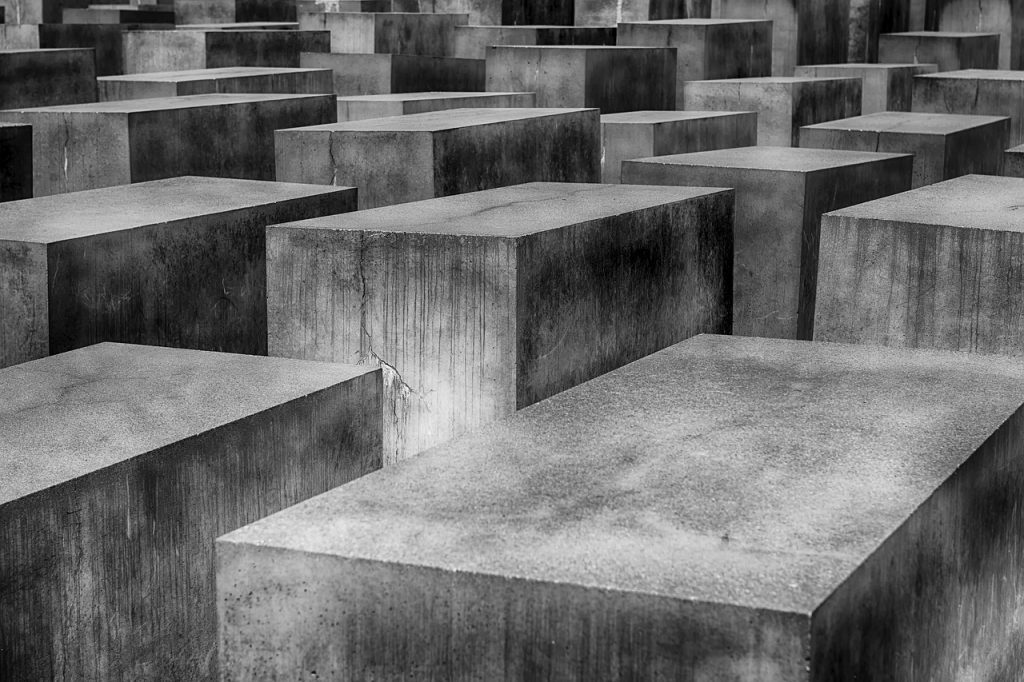
Years ago, a philosopher by the name of George Santayana said a phrase that fuels many debates to this day. His original saying is “those who cannot remember the past are condemned to repeat it”, although, many sources now present it as variations of “those who cannot learn from history are doomed to repeat it”. The latter definitely has more substance to it in the light of the ongoing debate about how much history we should be learning and how.
Is It Better to Remember or Forget About the Past?
On one hand, Santayana was right. Learning about the past is essential in order for people to progress. One also shouldn’t overlook the importance of remembrance and paying respects to the dead, both those who pushed the progress forward and those who have fallen victims to major tragedies that could and should have been averted.
The main argument in favor of learning about the past is that its knowledge is necessary for preventing the same thing happening in the future. Having it one can see the signs and stop the tragedy before it gains momentum.
That’s sound in theory, but the reality is always different. For example, today people are surely forgetting, and the much-critiqued education system is only partially at fault here. Even the greatest of tragedies weren’t spared this fate. It’s a proven fact that about two-thirds of millennials today don’t know about the Holocaust, and this number is surely greater for generations that follow them. In the school history course, the subject of one of the greatest disasters in history is barely touched, if touched at all. And outside of a history classroom, one can only see small, but terrifying, glimpses of it at the Holocaust Museum and other museums that rarely attract many visitors. And now we are witnessing a rise of antisemitic crime.
Are these two facts related? Does the lack of awareness about the horrors done in the name of Aryan supremacy contribute to the fact that right-winged extremists seem to be gaining popularity again?
It does, but by how much? That is the question that no one can truly answer.
And what about other genocides? The Holocaust had the highest death toll, but it was far from the only genocide in history. And quite a few of those happened after World War 2 and before the memory of the atrocities against the Jews began to fade. This means that while forgetting history is a factor, it’s not the deciding factor in its repeats.
But what is that thing responsible for the reenactment of past mistakes and tragedies?
Learning. This is the important thing that is most often overlooked when citing Santayana’s famous saying. It’s not enough to learn about the past and know the facts of things that happened. It’s important to learn from those facts and put in place protections that will prevent them from happening again. And this is something that humanity, as a whole, has yet to succeed in doing.
Dwelling in the Past Can Be Just As Bad
One also shouldn’t forget that there is such a thing as “too much history”. The Bosnian War and genocide that happened there in the 1990s is a vivid example of how the past can be exploited by political powers. Used as a part of propaganda, which fueled the war, history can become a weapon in the hands of those who want to use it for their own goals.
And this is what humans have been doing since the dawn of time. There is always someone who will use any means necessary to achieve whatever it is they wish. This results in wars and genocides, and hundreds of smaller but no less devastating tragedies.
Therefore, the problem isn’t whether people should be learning history but human nature itself. Perhaps, teaching this can help fix this fundamental flaw and truly stop the worst of the past from repeating.
-

 Business12 months ago
Business12 months agoHow To Future-Proof Your Business With The Right Tools
-

 Travel10 months ago
Travel10 months agoTravelling from San Antonio to Guadalajara
-

 Travel7 months ago
Travel7 months agoTravel wellness tips for a healthier and more enjoyable journey
-
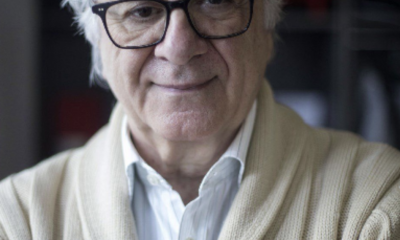
 Europe5 months ago
Europe5 months agoRecent Books by Boaventura de Sousa Santos: Law, Colonialism, and the Future of Europe

